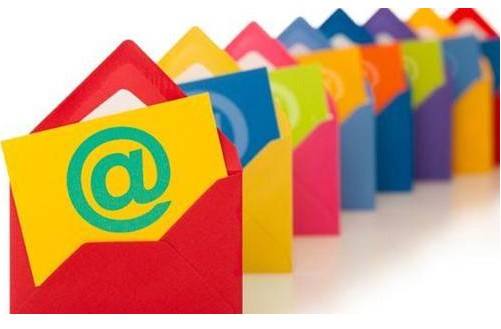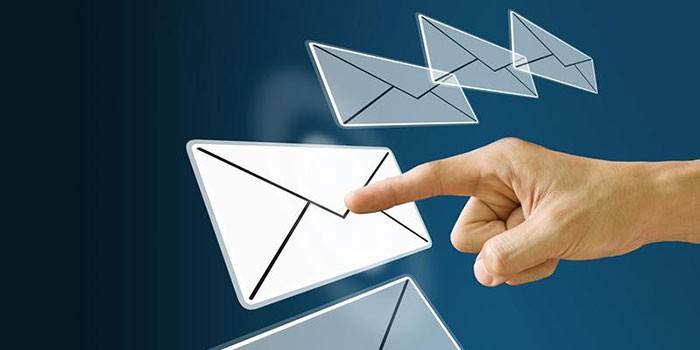How to Write a Development Letter to Clients after an Exhibition
September 18, 2017
Source: Ddu
 1,225
1,225

After attending Shanghai CNEF and Hospitalar in Brazil you come home and look at the pile of name cards and the masses of client information you collected. Now what?
We often establish new business relationships at exhibitions such as these but the key of securing them lies in how you follow up on your clients.
Ddu (www.drugdu.com), the leading global pharmaceutical and medical device B2B online platform, today shares with you some insight on how to organize client materials and write your first follow up development letter.
I. Organize and follow up on your clients with purpose

The first step is to collect as much information as possible and pay special attention to all the relevant details at the exhibition. For example, what the client is looking for, what they are most concerned about, what kind of products and suppliers they have in mind and which business partners they would like to keep.
After this you will be able to arrange the information according to clients’ interests and the thoroughness of information to help prioritize who to contact first. This will also help you to send them e-mails with content specifically addressing their needs. You can divide your clients as follows:
- Buyers who ink deals at the exhibition
In the event that a client signs a contract at your booth, you are required to keep in touch with them. Regularly contact them to keep them up to date with the latest developments and to remind them of remittance.
- Potential buyers
Many potential buyers will tell you exactly what they are looking for such as details about their desired products and price ranges. It would be wise to give priority to these clients since it’s clear that they are not browsing but ready to buy. Do thorough research on all the client’s key concerns before relying make sure that all samples are well prepared and updated. Learn all you can about the client and be sure to visit their website to get a clear understanding of who they are and what they do.
- Clients who show only slight interest by exchanging name cards and asking for product information.
There are of course a number of people who leave their contact information and only show a bit of interest in your products rather than committing to you. Never underestimate the potential of these individuals and be sure to send them detailed product information and express your goals and willingness to do business with them.
II. Do not expect too much from a development letter

Generally speaking, clients are very willing to do business at exhibitions since they have the opportunity to speak to you as well as view and experience your products and services first hand.
The purpose of a development letter is however more targeted since you now have all the clients’ information and understand what their interests are.
When writing a post-exhibition development letter, we suggeststicking to the following three principles:
1. Concision
The content of a development letter should be concise and no more than three paragraphs.
2. Simplicity
Explain your idea in a clear and simple way to ensure that no words are mistaken especially if they are not English speakers.
3. Precision
Don’t beat around the bush and go straight to the point.
III. Make your development letter cut to the chase

Besides sticking to the three principles above, be sure not to overload the development letter with irrelevant details.
1. Get straight to the point
Introduce yourself and your company to the client briefly.
2. Highlight the products of interest
Affixed detailed information and quotations of products including parameters, sizes and packing material.
3. Create a detailedcatalogue and catalogue classifications in PDF format and be sure to archive images and bestsellers.
4. Add your name card
Affix an imageof your name card as well as the name card of your client to help make a deeper impression.
The format of your development letter should firstly lead your clients to check the quotation directly and inform them that samples are available at any time. Secondly, since the quotation is attached, it’s not necessary to mention the MOQ for the time being. Lastly, remember to include alternative contact information like a telephone number, email address and website.
This is Ddu’s suggested development letter template:
Dear David,
Good day!
We were pleased to meet you at CMEF Shanghai and enjoyed our conversation. ****.
We are ABC Co., Ltd from Shenzhen, China. Our company has been specializing in APIs for 10 years. We are currently a supplier of EFG and would like offer our services to you too.
FREE SAMPLES & CATALOGUES will be sent if needed.
We look forward to your reply and working with you in future.
Best Regards
Alice
Sales Manager
Often you don’t receive a reply to the email in which case it is advisable to phone them.
From here on out you will be able to build a professional relationship with your newly acquired clients and so expand your business in the international market.
This article is from DduNews, only for non-commercial use and reproduction. Please indicate the source when distributed.
By DduRead more on
- 10 Triumphant Drug Launches Of The Decade August 26, 2021
- China’s Import and Export Market Report of Rheumatoid Arthritis Drugs August 26, 2021
- China’s Import and Export Market Report of Diabetes Drugs August 25, 2021
- China’s Import and Export Market Report of Contraceptive Drugs August 24, 2021
- What ingredients are in vaccines? December 17, 2019
your submission has already been received.
OK
Subscribe
Please enter a valid Email address!
Submit
The most relevant industry news & insight will be sent to you every two weeks.



